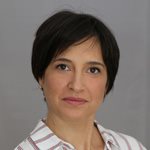לימפומה
דיון מתוך פורום המטולוגיה
שום רב אני חליתי בשנת 1999 בלמפומה מסוג K-1 נונהוצקין באזור המפשעה ללא שליחת גרורות טופלתי בצופ + הקרנות מקומיות ברצוני לדעת 1 . מה הסכוים שמחלה כזת יכולה לחזור 2. מה ההבדיל בין הוצקין לנונ הוצקין תודה רבה
לימפומות נבדלות בסוג התאים שהוא המקור לגידול ובאופי המחלה, מהלכה והתנהגותה. זה הבסיס להבדל בין לימפומה מסוג הודג'קין ובין לימפומות שאינן הודג'קין וכן לסיווג הלימפומות שאינן הודג'קין לתתי קבוצות. כאמור, המהלך שונה וגם הפרוגנוזה שונה. בלינק הבא תמצא מידע אודות הלימפומות, הודג'קין ולא הודג'קין: http://www.merck.com/pubs/mmanual/section11/chapter139/139a.htm לגבי הפרוגנוזה, מצ"ב תקציר שסוקר 40 חולים בלימפומה מסוג זה ואשר מציין את % התגובה וה- SURVIVAL (חיות) (צריך לזכור שמה שאתה מתאר הוא לימפומה בשלב 1 = ממוקמת, מה שמעודד עוד יותר): Leuk Lymphoma 1999 Sep;35(1-2):159-69 The therapy of primary adult systemic CD30-positive anaplastic large cell lymphoma: results of 40 cases treated in a single center. Fanin R, Sperotto A, Silvestri F, Cerno M, Geromin A, Stocchi R, Infanti L, Patriarca F, Zaja F, Damiani D, Baccarani M Department of Medical and Morphological Research, University Hospital, Udine, Italy. [email protected] The outcome of a series of adult patients, affected by primary systemic CD30-positive anaplastic large cell lymphoma (ALCL), treated with a sequential intensive therapeutic program, has been analyzed and all data available in the literature have been reviewed. Forty consecutive, unselected patients with ALCL were treated with the F-MACHOP regimen, followed by radiotherapy (RT) for residual mediastinal disease (15 cases) and by autologous stem cell transplantation (ASCT) conditioned with BAVC (29 cases). Eighty-nine percent (32/36) of the patients younger than 60 years were eligible for completing the sequential treatment. Since then, 3 patients in CR refused ASCT, 1 was excluded for cardiac toxicity and 3 progressed and died of disease. Thus, 29 have been so far submitted to the transplant procedure. CR and PR rates were 40% and 45% respectively after CHT; 52.5% and 35% after RT; 80% and 5% after ASCT, with 78% of patients transplanted in PR convertin to a CR. Actuarial overall survival is 85% at 48.5 months (93% at 66 months for the 29 transplanted patients) and disease free survival is 100% at 54 and 64 months respectively, with no relapses observed among patients who reached a CR. Considering our data and those of the literature, it can be concluded that although the role of ASCT in the therapy of ALCL must not be considered as definitive, its efficacy in converting PR into CR and in preventing relapses, suggests that a randomized trial comparing CHT alone vs CHT+ASCT should be undertaken.

